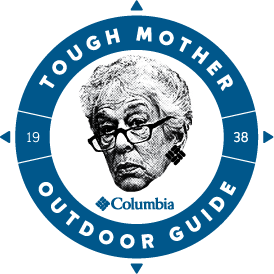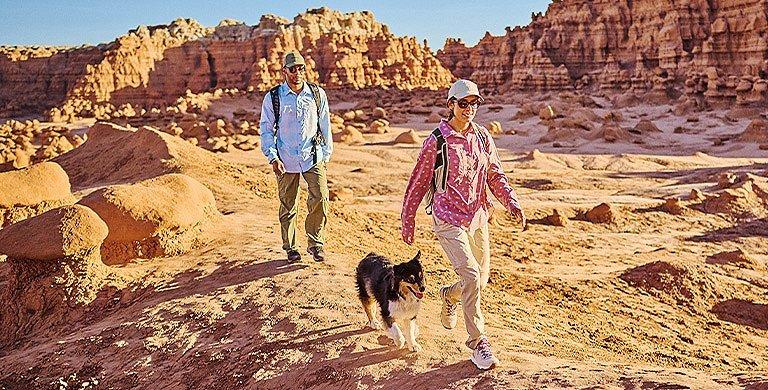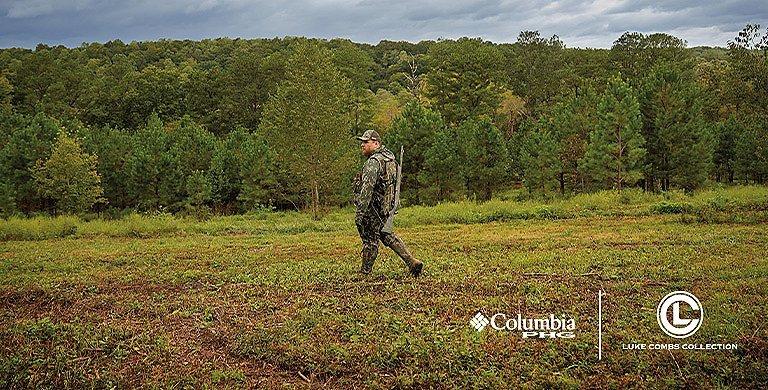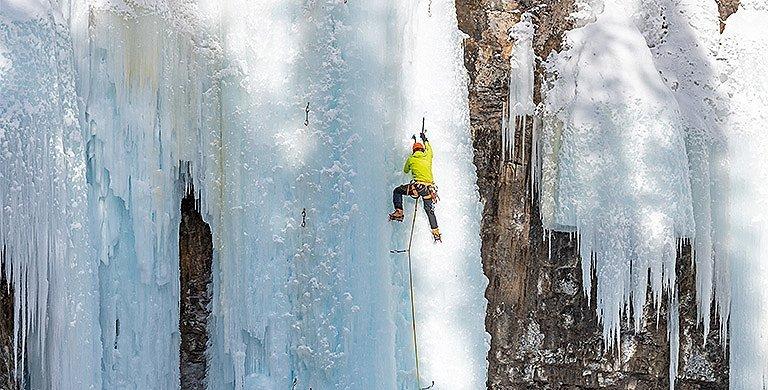OUTDOOR LIFE
What You Need to Know About Kayaking and Canoeing: The Ultimate Beginner’s Guide
From chilling on flat water to conquering whitewater and camping under the stars, canoes and kayaks let you explore, fish, and have a blast with no expert skills required…yet.
BY: NANCY BOUCHARD
It's tough to check social media when you're gripping a paddle, so the water is the perfect excuse to unplug. Forget your phone, embrace the adventure, and let nature be your distraction. It's a killer way to birdwatch, spot wildlife, and see the world from a fresh angle. Whether you're cruising at a leisurely pace or working up a full body sweat, canoeing and kayaking can be as chill or as intense as you want. And the best part? Anyone—no matter their age, skill level, or ability—can hop in a boat and paddle their way to a good time.
Canoeing and kayaking also open the floodgate to a whole new world of outdoor fun, like fishing, hunting, swimming and camping and remote hiking. In contrast to trekking and backpacking, you can bring along plenty of gear without sweating the extra weight. With the right set up you can even bring your water-loving canine friends. Whether it’s an après-work paddle or bucket-list trip to places like Minnesota’s Boundary Waters, Maine’s Allagash Wilderness Waterway or Washington’s San Juan Islands, paddling is a sublime way to get fit, hang with friends and family, and enjoy the great outdoors.
Canoeing and kayaking also open the floodgate to a whole new world of outdoor fun, like fishing, hunting, swimming and camping and remote hiking. In contrast to trekking and backpacking, you can bring along plenty of gear without sweating the extra weight. With the right set up you can even bring your water-loving canine friends. Whether it’s an après-work paddle or bucket-list trip to places like Minnesota’s Boundary Waters, Maine’s Allagash Wilderness Waterway or Washington’s San Juan Islands, paddling is a sublime way to get fit, hang with friends and family, and enjoy the great outdoors.
A Long History and Bright Future
Canoeing has been around for millennia, but it wasn’t until the
American Canoe Association (ACA) showed up in 1880 that it went from ancient transport to a full-blown hobby. Kayaks go back thousands of years as well, but it wasn’t until 1900 that people figured out it was more fun than just a way to get across water. Then, in 1936, kayaks racing made its Olympic debut in Berlin, proving once and for all that paddling could actually be competitive—not just something you do to avoid a soggy walk.
We checked in with Jordan Taylor, ACA Instructor Trainer, to find out just how easy it is to get started. “Canoeing is easy to learn but can take a lifetime to refine,” Taylor explains. Kayaking is also easy for beginners, although it might take a bit longer to get comfortable in fast water. Pro tip: practice in a calm lake or, better yet, swimming pool.
Taylor says canoeing’s a crowd favorite because even the youngest paddlers can pick up the basics and learn teamwork. Tandem canoeing is still the backbone of summer camps and college outdoor programs, and it’s a pretty slick way to haul gear from one campsite to the next.
Beyond camps and colleges, local nonprofits and outdoor clubs offer lessons and nature tours, and provide equipment. Plus, there are plenty of places to rent canoes and kayaks, with staff who’ll show you the ropes before you hit the water.
Compared to many sports, canoeing and kayaking are relatively budget-friendly. Unlike skiing or golfing, there are no lift tickets or green fees, and a good canoe or kayak can last for decades.
We checked in with Jordan Taylor, ACA Instructor Trainer, to find out just how easy it is to get started. “Canoeing is easy to learn but can take a lifetime to refine,” Taylor explains. Kayaking is also easy for beginners, although it might take a bit longer to get comfortable in fast water. Pro tip: practice in a calm lake or, better yet, swimming pool.
Taylor says canoeing’s a crowd favorite because even the youngest paddlers can pick up the basics and learn teamwork. Tandem canoeing is still the backbone of summer camps and college outdoor programs, and it’s a pretty slick way to haul gear from one campsite to the next.
Beyond camps and colleges, local nonprofits and outdoor clubs offer lessons and nature tours, and provide equipment. Plus, there are plenty of places to rent canoes and kayaks, with staff who’ll show you the ropes before you hit the water.
Compared to many sports, canoeing and kayaking are relatively budget-friendly. Unlike skiing or golfing, there are no lift tickets or green fees, and a good canoe or kayak can last for decades.
What is the Difference Between Kayaking and Canoeing?
Kayaking and canoeing both involve paddling, but the boats and techniques differ. Andrew Gonzales, owner of The Hub, a boating and bike shop in Salmon, ID, suggests that people should choose a craft based on their local waterways. “If you live in areas abundant with lakes and easy-going rivers a canoe can be a great option,” he explains. “But if your rivers are shallow or dotted with rocks and rapids then a kayak will be a more capable craft.” Canoes, while great for cruising straight lines, are limited in their quick maneuverability, notes Gonzales. Kayaks, on the other hand, excel at tight turns and dodging obstacles but can be somewhat frustrating when you’re trying to go straight.
In a kayak, you sit with your legs stretched out and use a double-bladed paddle for speed and agility, while canoes are larger, open, and use a single-bladed paddle. Both offer solid fitness benefits, working your upper body, core, and arms. Stand-Up Paddleboarding has basically the same strokes as a canoe, but with a longer paddle and way less protection from water and those random obstacles Mother Nature throws in your path.
In a kayak, you sit with your legs stretched out and use a double-bladed paddle for speed and agility, while canoes are larger, open, and use a single-bladed paddle. Both offer solid fitness benefits, working your upper body, core, and arms. Stand-Up Paddleboarding has basically the same strokes as a canoe, but with a longer paddle and way less protection from water and those random obstacles Mother Nature throws in your path.
Tips on How to Get Started Canoeing and Kayaking
When it comes to your first excursion, Gonzales suggests taking a lesson. “Lessons will give you the proper safety procedures when on the water and prepare you for when things get wild,” he explains. Clinics for beginners—and paddlers of all levels—are offered at outdoor stores, outfitters, and paddling clubs.
- Take a Class or Join a Club: Visit the ACA website to find a canoe or kayak club near you.
- Wear a Life Jacket: Taylor stresses that in all paddle sports, wearing a well-fitted lifejacket and knowing what to do in a capsize are essential. "If the combined air and water temp is 120°F or below—like 60-degree air and 60-degree water—you’ll need extra layers to stay warm when wet," he advises.
- Check Weather and Water Conditions: Before you launch, check the weather and water conditions. Avoid strong winds, thunderstorms, and paddling upstream or against strong currents. As Taylor points out, "Know the forecast and anticipate how it might change. Always have a plan to get off the water fast if a lightning storm hits."
- Build Your Skills: Gonzales recommends starting slow when learning to paddle: “Stick to easy stretches, no rapids, and under 5 miles.” He warns against overdoing it early, as a bad experience can turn you off paddling for good. "Keep it simple, fun, and always wear a life jacket." Also, share your plan—where you're parking, paddling, and when you’ll return—and remember to check in.
- Communicate with Your Partner: Whether you're tackling rapids or just trying not to paddle in circles, good communication keeps things smooth.
Basic Strokes
The beauty of kayaking and canoeing is that your technique gets better every time you hit the water—and so does your ability to read it. Taylor points out that you only need a few basic strokes to paddle away from the shore and into fun, fishing, or the simple joys of getting outdoors and working out.
- Forward Stroke: The most common stroke used to propel you forward in both kayaks and canoes.
- Draw Stroke: This stroke helps you move sideways and is crucial for docking or avoiding obstacles.
- J Stroke: A canoeing technique where you paddle normally, but at the end of the stroke, you turn your paddle to form a ‘J’ shape to keep your canoe moving straight.
- Reverse Stroke: Used to slow down or reverse direction.
Dress for Aquatic Success
The good news is that it’s easier than ever to stay cool, protected, and dry while paddling. And when it comes to fit, function, design, and color, watersports apparel has never been better.
- Footwear: In many ways, this is the most important paddle gear you'll own. You’ll need foot protection for getting in and out of the boat and for those scenic stops or short hikes during your paddle. Choose lightweight water shoes or sandals with solid traction for both wet and dry conditions. Quick-drying materials that don’t absorb water are essential.
- Clothes Built for Water and Sun: he typical recreational paddling outfit consists of a long-sleeve, hooded sun shirt and synthetic shorts. More advanced kayaking and canoeing requires more advanced equipment, like a spray skirt, dry or wet suit, helmet and neoprene gloves, but if you are just starting out, wear versatile outdoor apparel.
- Swimwear: A swimsuit isn’t critical for canoeing or kayaking but a great addition if swimming is on your agenda.
- Layer Up: In colder conditions, layer your clothes with a thermal midlayer that retains warmth even when wet.
- Pack a Light Windproof Jacket: Conditions change quickly on the water, and if you get wet, things can get cold fast. A lightweight wind jacket can literally be a lifesaver.
- Sun Protection: A long-sleeved top with at least 50 UPF protection and a hood is your best friend for a day on the water.
- Sunglasses: These are a must for most paddle days and a great way to show your paddling style. They protect your eyes from the sun and rogue fishing hooks, while polarized lenses help you spot underwater obstacles—and fish. Pro tip: add a sunglass leash to keep them safe if you take an unexpected dip.
- Drybag: A small, waterproof backpack or drybag keeps your stuff dry. It should be big enough to hold an extra layer, snacks and water, phone or camera, a mini medical kit, and zip-lock bag for trash.
For your next adventure on the water, check out Columbia’s paddle-worthy apparel, footwear and accessories.



